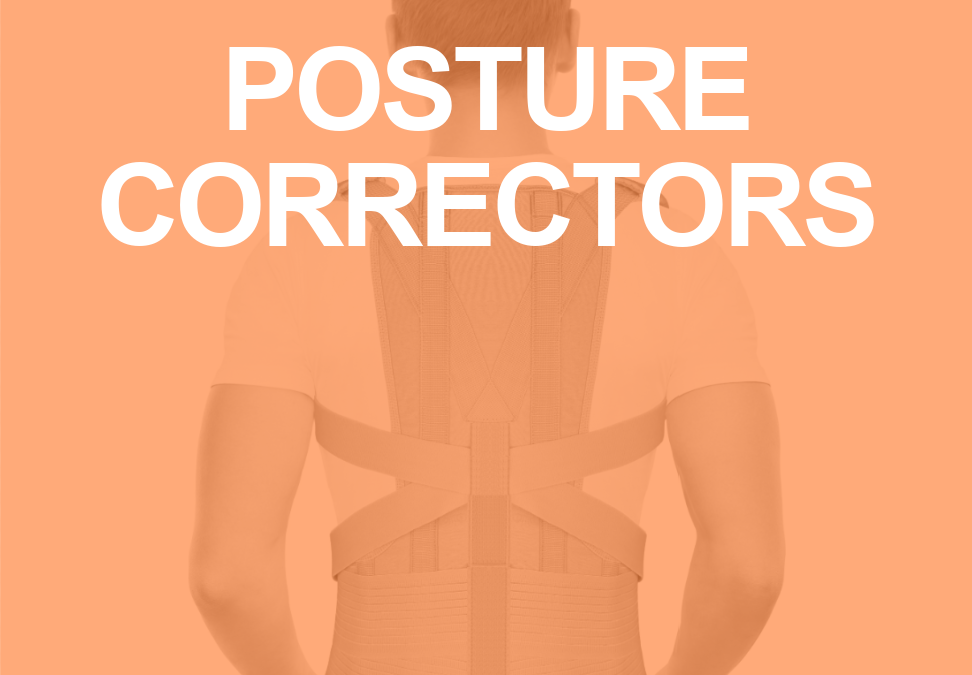Good posture is always an advantage for personal training clients looking to start training and get fit. It allows them to assume the proper posture when doing different exercises to avoid the risk of injury. As a personal trainer, finding ways to help your clients better their form is essential. It will help make your training sessions easier and result in satisfied, more capable clients. Studies show that using posture correctors like scapular braces helps correct poor posture in athletes. Therefore, recommending posture correctors may help get your clients closer to better posture.
You may be wondering how functional or effective these posture correctors are. Let’s take a deeper dive into these posture products to determine their best application and effectiveness.
What Posture Correctors Are and How They Work
As the name suggests, these are devices developed to help individuals achieve better posture after using them. In addition, they act as a great cue to help individuals remember to keep the proper posture always.
These posture correctors work by addressing the muscle imbalances that occur over time. For example, always holding the wrong posture results in the muscles overstretching and adapting to a different direction.
Using a posture corrector is meant to help reestablish the direction of the muscles by working them and guiding them right. Doing this allows the muscles to start supporting your client’s body a bit better.
In addition, posture correctors also help build the proprioceptive senses responsible for allowing us to function freely. These senses significantly impact how we act and move without thinking or analyzing every action our body takes.
How to Boost the Effectiveness of Using Posture Correctors
Posture correctors work great when it comes to developing and maintaining good posture. However, there are a few things you can recommend to your clients to help boost the effectiveness of this process.
Duration of Wearing the Posture Corrector
Experts suggest wearing the posture corrector for only a few hours a day to get the maximum impact. Limiting the wearing time will help your clients avoid becoming reliant on the device and instead practice good posture on their own.
Posture Correctors are Not to be Used Long Term

Posture correctors are not a permanent option that your clients will be coming back to time and time again. They’ll need to get to a point where they can hold good posture without any assistance. Therefore, you need to recommend that they stop using the device as soon as they notice their form improving, and they can stay mindful to keep the proper posture.
Introduce Posture Strengthening Exercises
Exercising is a great way to engage the core muscles that support posture and retrain them on how they should be.
Exercising with the posture corrector will help condition the muscles appropriately and give your clients an easier time after they’re done using the posture corrector.
Introduce some fun posture strengthening exercises that will help improve your client’s muscles to help boost the effectiveness of the posture correctors.
Are Posture Correctors Helpful?
Posture correctors are helpful and can be a great way to regain posture and get rid of unhealthy habits like slouching. However, they can also be detrimental, especially when your clients invest in the wrong options and don’t use them correctly. Relying on a posture corrector for an extended period is an excellent recipe for disappointment and frustration. When the body gets too used to the support being provided by the posture corrector, the muscles may relax and weaken.
Yes, your client will retain good posture, but once the posture corrector is off, they are back to where they started. So, you need to follow up with your clients and stress the need for them to only use posture correctors as a tool.
It should only serve to help them retrain their connection to the body. These posture correctors serve a purpose just like compression socks for nurses on their feet all day. Your clients should only use them for a limited time to encourage better posture.
Your clients can have the posture corrector on for some time and remove it to retrain their posture without help. Then, over time, they’ll be able to sit or stand up straight without the aid of a posture corrector.
The quality of the posture corrector plays a significant role in ensuring that your client successfully retrains their muscles and can hold the proper posture. Here are the main things your clients should look out for when investing in a posture corrector.
- Area of support
- Ease of use
- Comfort
- Effectiveness
- Ability to encourage muscle activation
A quality posture corrector is worth the investment, provided your clients do not solely rely on it. Instead, embrace some best practices to help them correct their posture with and without the help of a posture corrector. As a personal trainer, you can trust that recommending a posture corrector to a client is an excellent option. However, remember to stress the need for them to implement the best practices to help boost the tool’s efficiency.
[sc name=”core” ][/sc]
Guest authors offer experience and educational insights based on their specific area of expertise. These authors are contributing writers for the NFPT blog because they have valuable information to share with NFPT-CPTs and the fitness community at-large. If you are interested in contributing to the NFPT blog as a guest, please send us a note expressing your interest and tell us how you can contribute valuable insights to our readers. We look forward to hearing from you! Send to editor@nfpt.com


